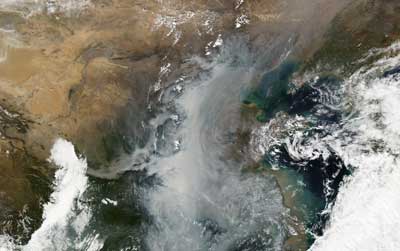
Researchers used observations of very small particulates in the air, as monitored by the U.S. Environmental Protection Agency as well as via the satellite-based Global Annual PM2.5 Grids from MODIS, MISR and SeaWiFS Aerosol Optical Depth (AOD), v1 data set distributed by SEDAC, to uncover the relationship between air pollution and type 2 diabetes. Controlling for non-pollution factors like obesity, they found that tiny particulates are responsible for a significant number of diabetes cases and that reducing exposure to the pollution would yield significant health benefits.
